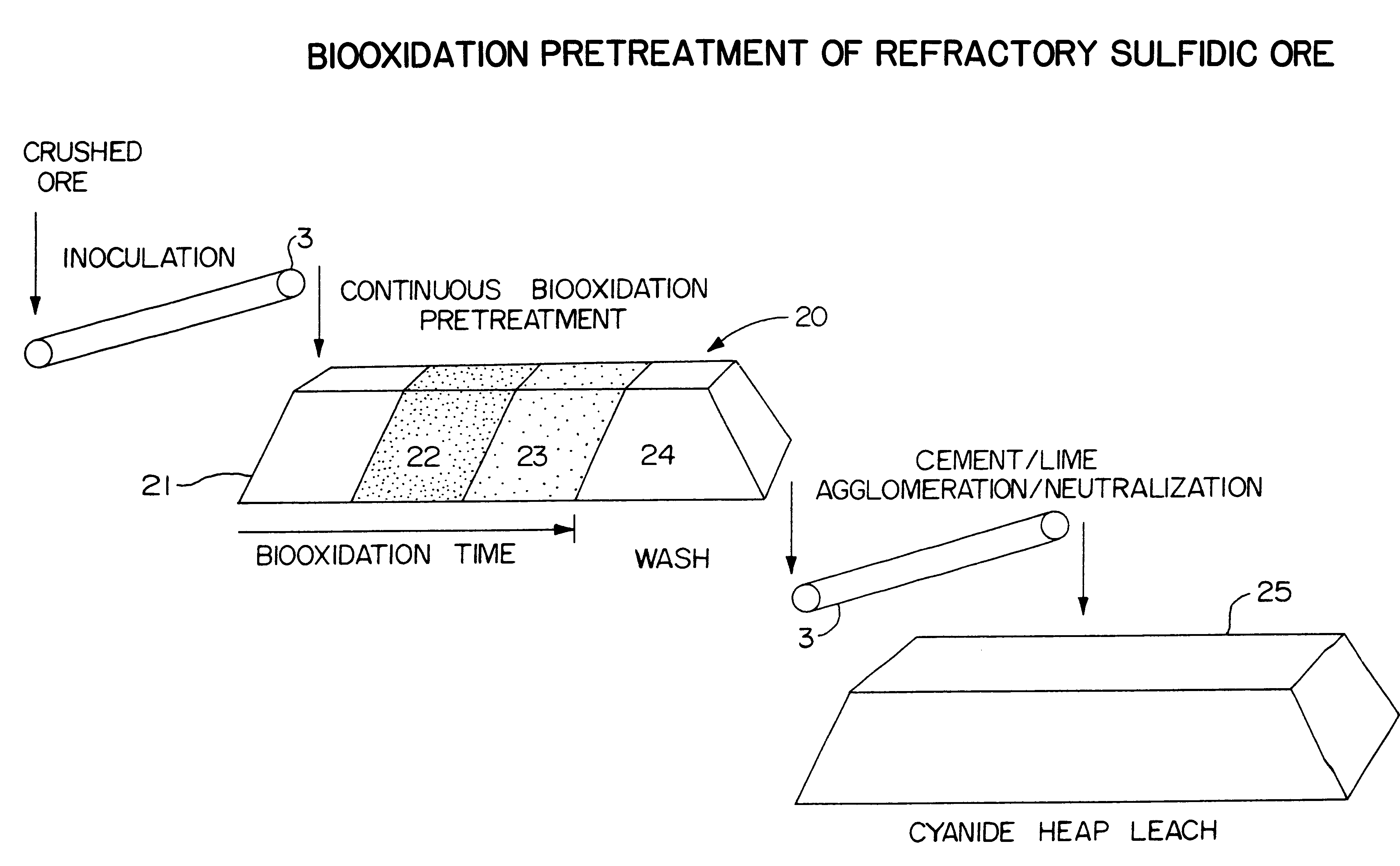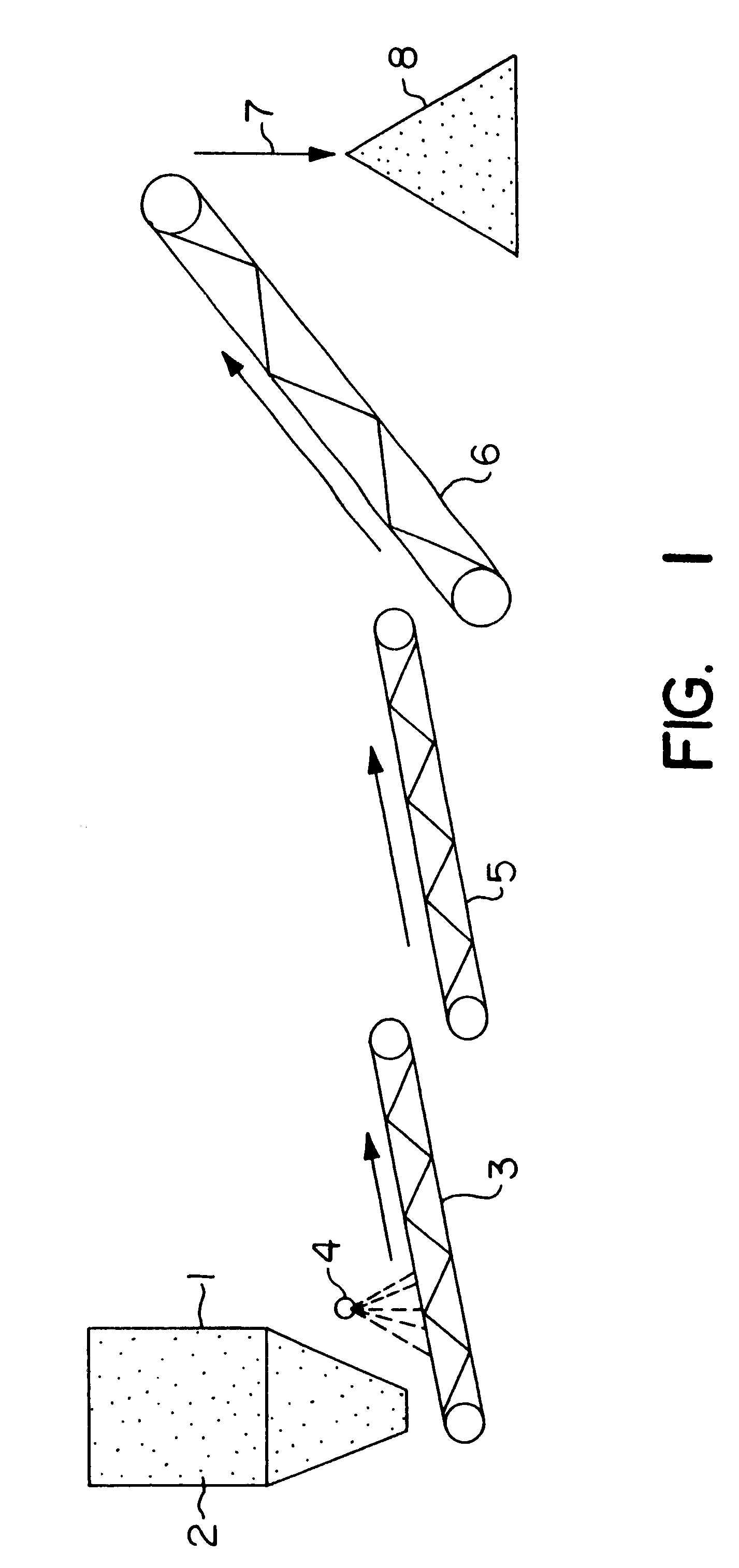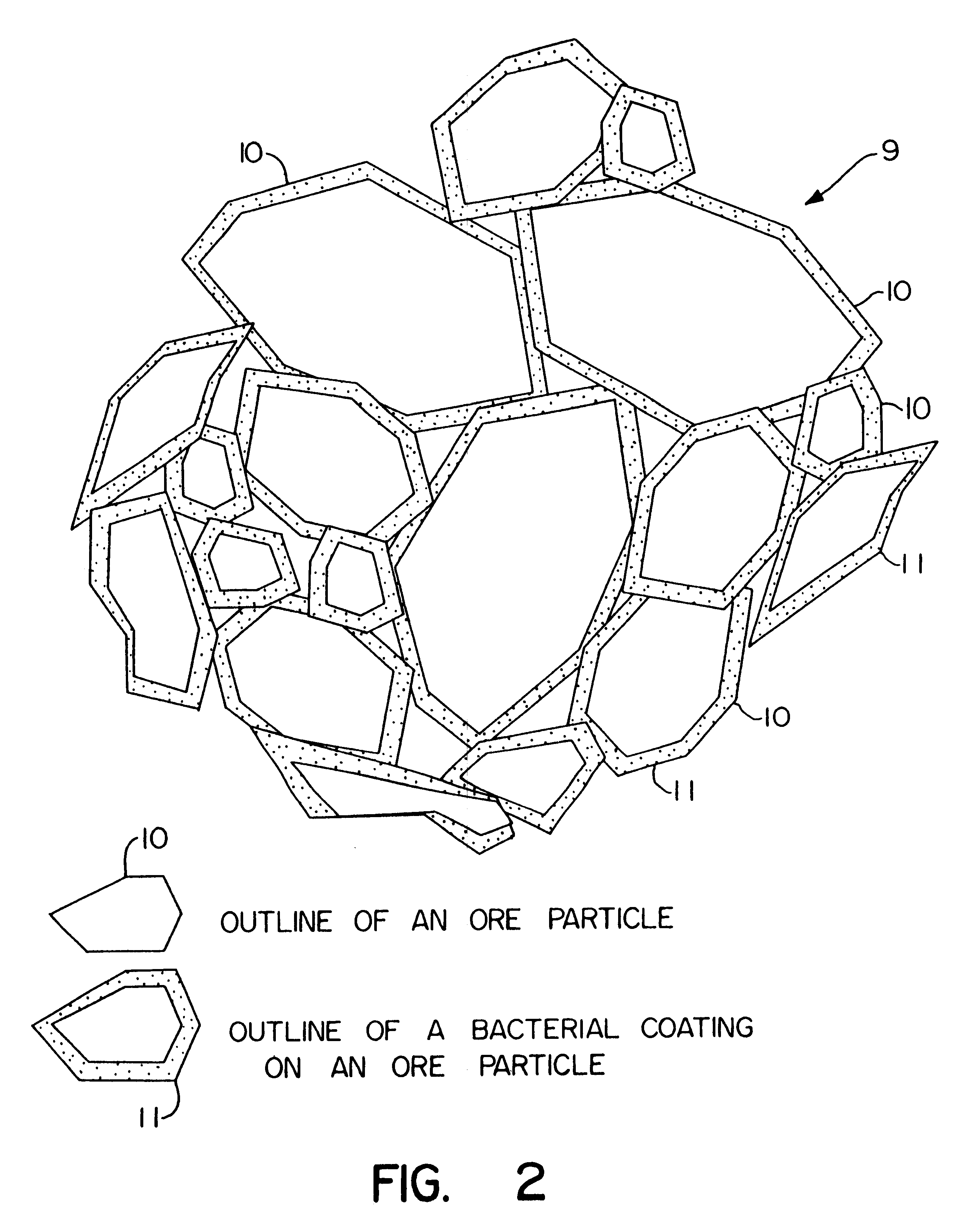Biooxidation process for recovery of metal values from sulfur-containing ore materials
a sulfur-containing ore and biooxidation technology, applied in the direction of arsenic compounds, dissolving, antimony compounds, etc., can solve the problems of low economic extraction of precious metals and/or nonprecious metal values, ore said to be refractory or highly refractory, dispersed gold found in ores, etc., to achieve the effect of enhancing the attractiveness of the process, accelerating the reaction rate, and eliminating the inhibitory effect of free or elemen
- Summary
- Abstract
- Description
- Claims
- Application Information
AI Technical Summary
Benefits of technology
Problems solved by technology
Method used
Image
Examples
example 1
A culture of Thiobacillus ferrooxidans, or a similar microorganism capable of iron oxidation and growth in acidic conditions, is grown in an acidic nutrient solution. A typical nutrient acid solution contains the following: 400 mg / l ammonium sulfate [(NH.sub.4).sub.2 SO.sub.4 ]; 40 mg / l potassium phosphate dibasic (K.sub.2 HPO.sub.4); 400 mg / l magnesium sulfate heptahydrate (MgSO.sub.4.7H.sub.2 O); 33.3 g / l ferrous sulfate heptahydrate (FeSO.sub.4.7H.sub.2 O), with a pH of 1.6 to 2.0, obtained by adjustment with sulfuric acid (H.sub.2 SO.sub.4). The microorganism culture is grown for a period of three to ten days with aeration at a temperature of 20.degree. to 35.degree. C. in an amount sufficient to provide the solution required for particulate formation. The microbe-culture solution is applied to the ore to facilitate the previously described particulate formation.
example 2
Laboratory experimentation for evaluation of microbial pretreatment of refractory gold ore samples utilized the T. ferrooxidans culture medium (EXAMPLE 1) for particulate formation of the ore samples. Following this particulate formation, the ore was biooxidized in columns. Table 1 lists the parameters of the particulate formation / inoculation procedure.
The acidic particulate formation solution, containing the T. ferrooxidans and iron (7 to 8 g total Fe / l), was used at pH 2 to 3. The solution was added at about 0.08 l / kg of ore. The effect of the solution was to form the particulates from the fine particles of ore preventing plugging of the column and facilitating even solution flow.
example 3
Two 500 ton samples (A and B) of crushed ore (nominal size minus 3 / 4 inch) were each used for forming the particulates using the culture medium (EXAMPLE 1) and T. ferooxidans. About 5100 gallons of culture medium were used for the particulate formation procedure. Following the particulate formation, the ore samples were placed on asphalt pads for pretreatment by biooxidation to enhance gold recovery.
Ore A was substantially a gold-bearing quartz ore containing sulfur in the sulfide and sulfate form. The ore contained by weight 1% iron oxides, 4% jarosite, 10% alunite, 4% kaolinite, 4% sericite, less than 1% pyrite and the balance substantially quartz (about 73% or more). The gold content by fire assay came to 0.051 oz. per ton of ore. The cyanide assay for gold was 0.012 oz per ton of ore, thus indicating that a substantial portion of the gold was occluded within the ore and not free.
The total sulfur content of ore A was about 1.42% of which sulfate sulfur was about 1.22% and sulfide...
PUM
| Property | Measurement | Unit |
|---|---|---|
| Fraction | aaaaa | aaaaa |
| Fraction | aaaaa | aaaaa |
| Percent by mass | aaaaa | aaaaa |
Abstract
Description
Claims
Application Information
 Login to View More
Login to View More - R&D
- Intellectual Property
- Life Sciences
- Materials
- Tech Scout
- Unparalleled Data Quality
- Higher Quality Content
- 60% Fewer Hallucinations
Browse by: Latest US Patents, China's latest patents, Technical Efficacy Thesaurus, Application Domain, Technology Topic, Popular Technical Reports.
© 2025 PatSnap. All rights reserved.Legal|Privacy policy|Modern Slavery Act Transparency Statement|Sitemap|About US| Contact US: help@patsnap.com



